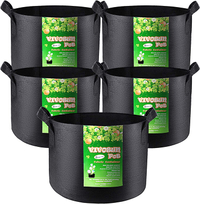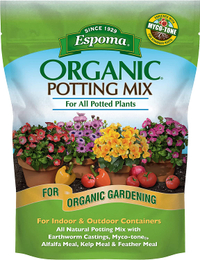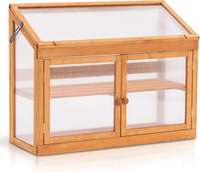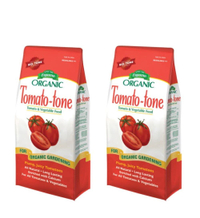'They're very tender plants' – 8 tricks to grow tomatoes in containers successfully from an experienced gardener
There's nothing quite like growing your own ingredients from scratch and, quite literally, enjoying the fruits of your labor
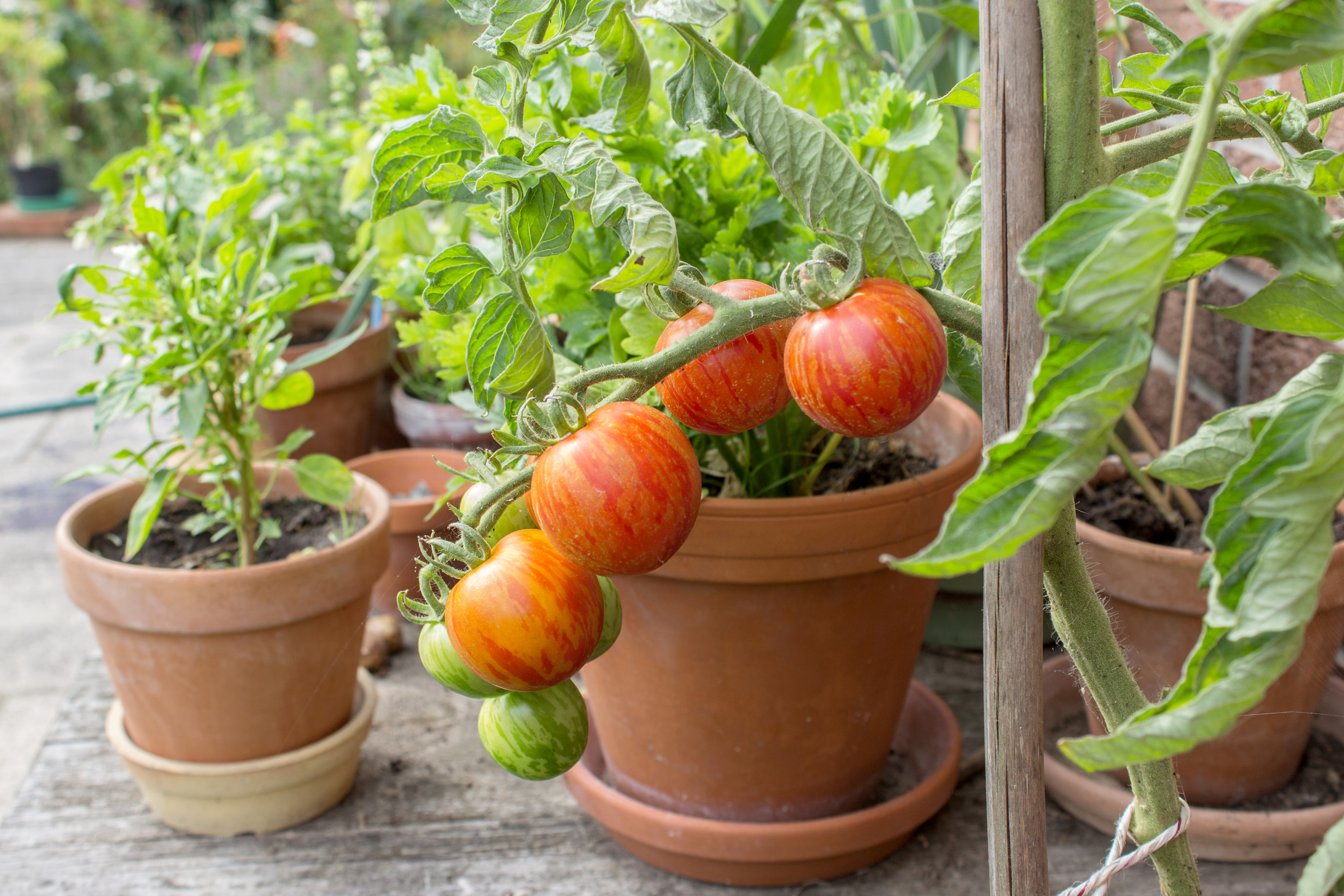

As warmer weather finally arrives, you might be looking for ways to get busy in your backyard. If your outdoor space is limited but still want to dip your toes into vegetable gardening, planting tomatoes in pots is a great way to start growing your own produce even if you only have a small courtyard or balcony to work with.
There's nothing quite like growing your own ingredients from scratch and, quite literally, enjoying the fruits of your labor. Food just tastes so much better when you know it's organically grown and the food 'miles' are actually a case of food 'feet'. Not to mention, heading out into your backyard to find bright red jewels hiding among the foliage to go in your salad is also immensely satisfying.
If you're ready to up your container gardening game with some potted tomato plants, we've compiled everything you need to know in this handy eight-step guide with the help of some expert gardeners.
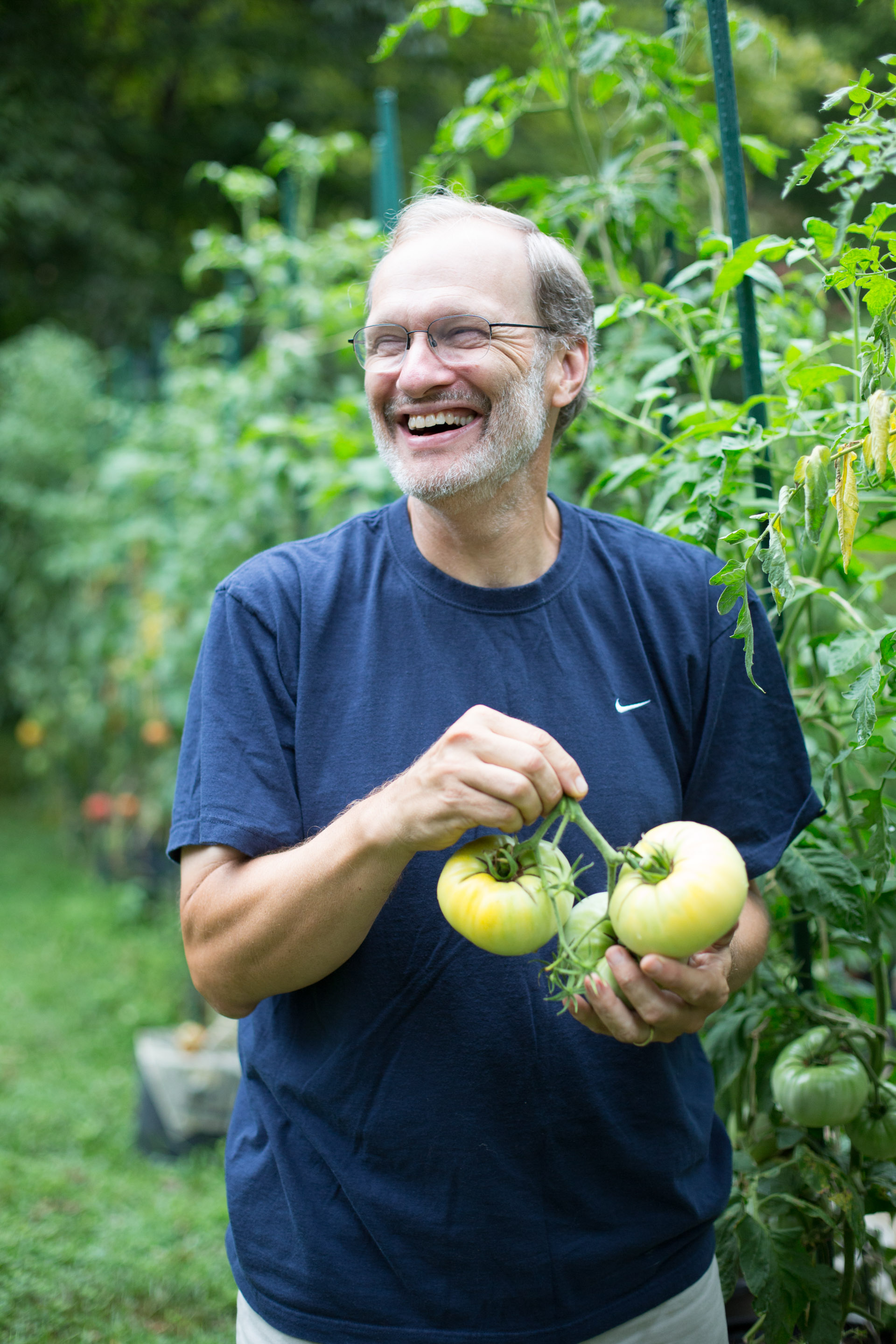
Craig LeHoullier lives and gardens in Hendersonville, North Carolina. His love of heirloom tomatoes began with his joining the Seed Savers Exchange, an organization for which he continues to serve as adviser for tomatoes, in 1986. He is responsible for naming and popularizing many well known tomatoes, such as Cherokee Purple, Lillian’s Yellow Heirloom and Lucky Cross. He is the author of Epic Tomatoes (2014) and Growing Vegetables in Straw bales (2016).
1. Choose the right pot

First things first, if you're planning to plant tomatoes in pots you'll need to make sure you choose the right container. While container gardening is certainly a more accessible way to grow tomatoes than in raised beds, there's more to it than throwing a seed into any old pot you can find.
'When growing tomatoes in pots, it's important to choose the right container to ensure the plant has enough space to grow and develop properly,' says Richa Kedia, gardening expert and blogger at The Nursery Lady. 'The first factor to consider is size. The container should be at least 18-20 inches in diameter and 12-14 inches deep to provide enough space for the tomato plant's roots to grow.'
There's also material to consider. Plastic containers are generally cheaper, more lightweight, and easier to move, but they might not be best for supporting taller varieties of tomatoes. As Richa notes, clay and ceramic containers are more porous and thus provide better aeration for the roots as well as being heavier, minimizing the risk of toppling over.
In general, there's a certain degree of flexibility when it comes to material. 'The key need, however, is a drainage hole in the bottom,' says Craig LeHoullier, gardener and author of the book Epic Tomatoes, available at Amazon. 'It's also important to note that terracotta has an added challenge of drying out more quickly, as moisture loss happens more quickly due to the natural porous nature of the material,' he adds.
Both Craig and Richa suggest that a 5-gallon pot is sufficient enough for growing a single tomato plant.
5-pack of 5 gallon grow bags, Amazon
These sturdy fabric grow bags are a great alternative to ceramic or plastic pots. Made of thickened nonwoven fabric, have great drainage and don't retain excess water, allowing your roots to breathe. The design also includes handles so that they're easily portable, too.
2. Match the variety of tomato to the pot size
Just as tomatoes come in a whole range of different sizes, shapes, and varieties, so do the plants. As alluded to above, taller or heavier tomato plants will need to have a weightier container to withstand more growth and reduce the risk of falling over in high winds. In contrast, dwarf varieties can get by in a far small, shallower pot.
'If you want to grow some smaller fruited tomatoes in very small containers - one gallon or less, stick with the so-called micro-dwarf types, the best known being Red Robin,' says Craig. 'The plants can produce fruit in lower light conditions, and top out at a foot tall and wide.'
With this in mind, it's worth noting that some varieties of tomatoes are better suited for growing in pots than others. 'When selecting tomato varieties for container gardening, look for varieties labeled as "determinate" or "bush" types,' says Richa. 'These varieties are naturally more compact and require less pruning and support than indeterminate or vine-type tomatoes.'
'Additionally,' she adds, 'cherry or small-sized tomatoes are also great options for growing in pots, as they tend to have a more compact growth habit and produce fruit earlier than larger tomato varieties.' Some popular tomato varieties that do well in containers for you to consider for your modern vegetable garden ideas are Husky Red, Better Bush, and San Marzano.
Veranda Red Hybrid Seeds, Burpee
For anyone with limited outdoor space, these sweet cherry tomatoes are perfect. Available in a pack of 30 seeds from Burpee, this dwarf plant pumps out a huge and ongoing harvest despite only being about a foot high and wide. Perfect for your sunny deck, balcony, patio, or even the windowsill!
3. Use a soil-less potting mix
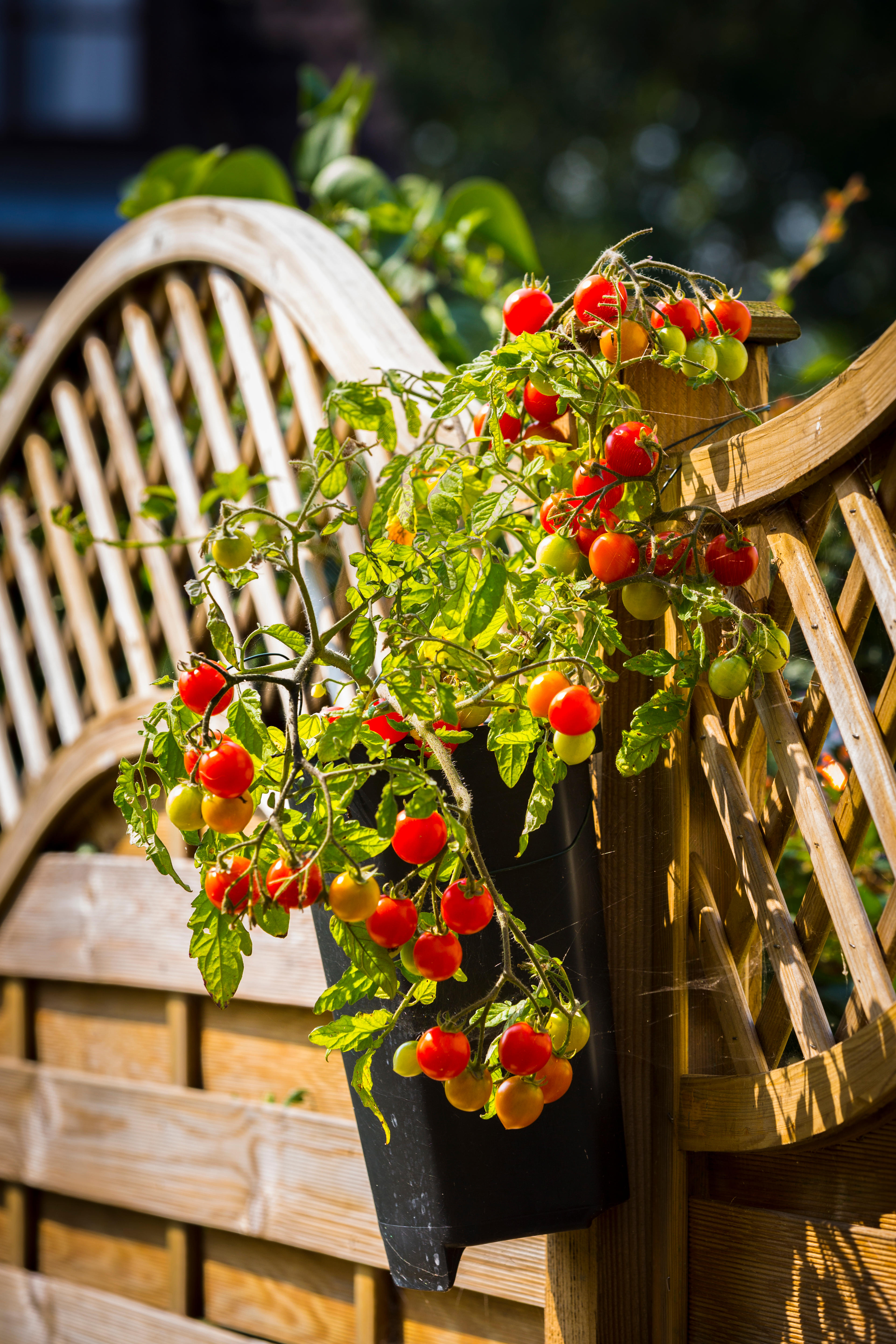
Before we overwhelm you by explaining a term as confusing as 'soil-less potting mix', rest assured that there are plenty of high-quality potting mixes available from your local hardware store that are suitable for growing tomatoes in pots (and likely for the rest of your vegetable container gardening). 'Some popular brands include Miracle-Gro, Fox Farm, and Espoma,' says Richa.
According to Craig, the principle for success is to find a good quality soil-less potting mix, but you can always make your own, too. 'Soil-less planting mixes are combinations of peat, sterilized loam, and shredded hardwood, with perlite or vermiculite,' he explains. 'It should absorb water well, but also drain well. The compost or aged manure component adds some nutrients and also increases the ability to hold moisture.' He recommends a rough 3-to-1 ratio of the soil-less mix to compost for the perfect potting mix.
Espoma organic potting mix, Amazon
This potting mix from Espoma, available at Amazon, is a great soil mix for vegetables, herbs and all other container plants. An organic soil, this mix is a rich blend of sphagnum peat moss, humus and perlite enriched with earthworm castings, alfalfa meal, and kelp meal for the healthiest plants possible.
4. Start seedlings indoors or in a greenhouse
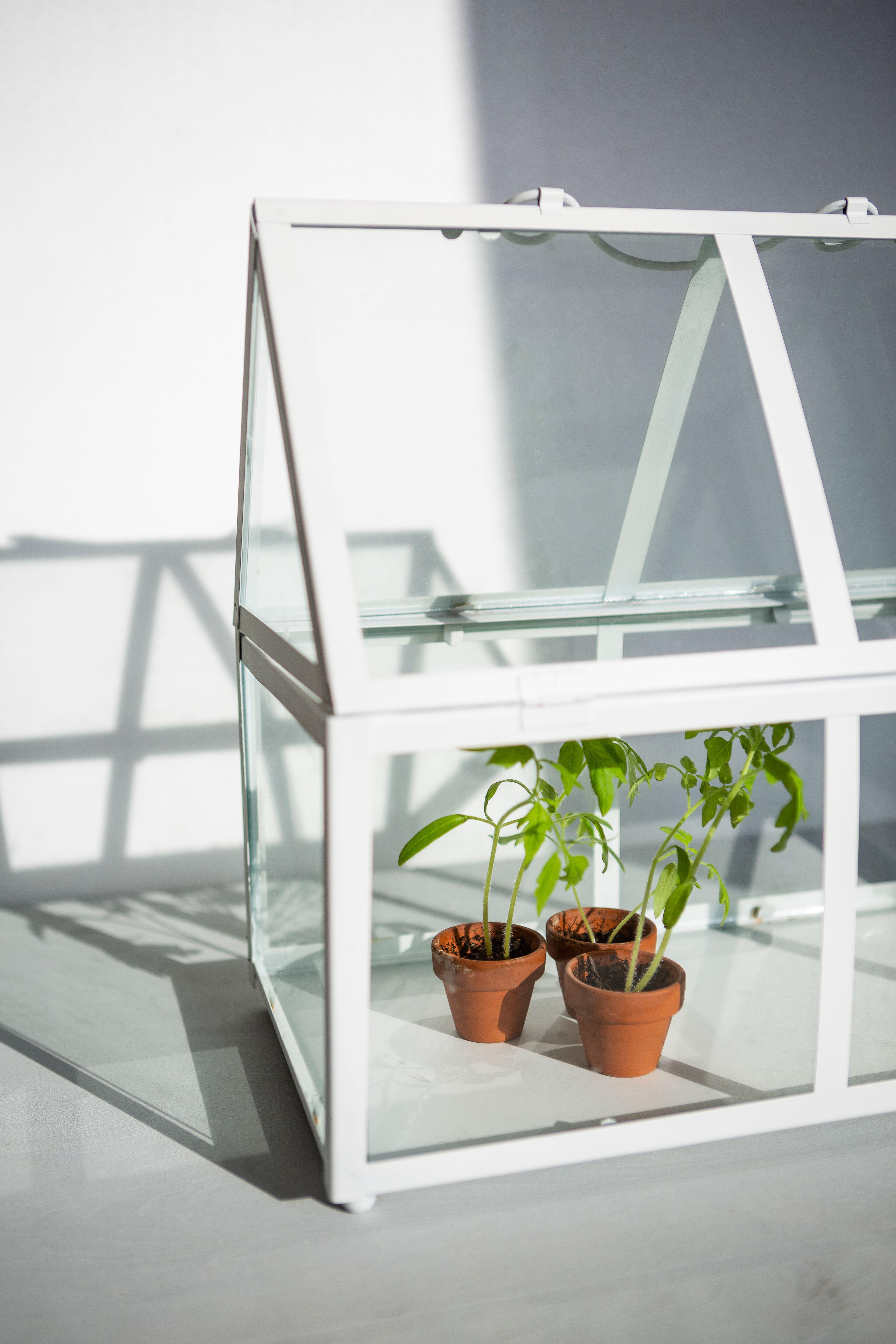
'Tomatoes are very tender plants that will be killed if they experience frost,' notes Craig. 'You should therefore only plan to get them in their final location once the threat of frost is over.'
He explains that it typically takes two months for the plant to mature from seeds to plants that are hardy enough to go into containers. The best time to plant your tomatoes, then, will obviously depend on the climate where you live. 'For example, here in my growing region, I aim for May 1 for my plant-out date, so I thus start my seeds around March 1,' says Craig. Until that point, it's advisable to grow the seedlings in an orangery, on a sunny window sill, or inside a glass house or cold frame.
'In general, tomato plants prefer warm weather and soil temperatures above 60°F,' adds Richa. Bear this in mind when planting, and purchase a thermometer if you have any doubts.
5. Keep them in a sunny spot
Leading on from that, your tomato plants will want to be in a warm and sunny spot once you've transferred them to containers, too. As Richa explains: 'Tomatoes require at least 6-8 hours of direct sunlight daily. If you're growing tomatoes indoors or in an area with limited sunlight, consider using grow lights to supplement their light needs.'
Certain varieties of tomatoes will tolerate lower light levels, but for a more abundant crop, they'll still need plenty of sun. 'Smaller fruited tomatoes can be grown with fewer hours of sun, but growth of the plant and maturity dates of the tomatoes are always lengthened by cool conditions,' says Craig.
Two-tier wooden cold frame, Amazon
This wooden cold frame is perfect for keeping your potted seedlings warm until they're ready for planting. The heavy-duty fir wood frame is extra durable while the two-tier design allows you to freely determine the height between layers of partition board as your plants grow.
6. Use a stake for vining varieties
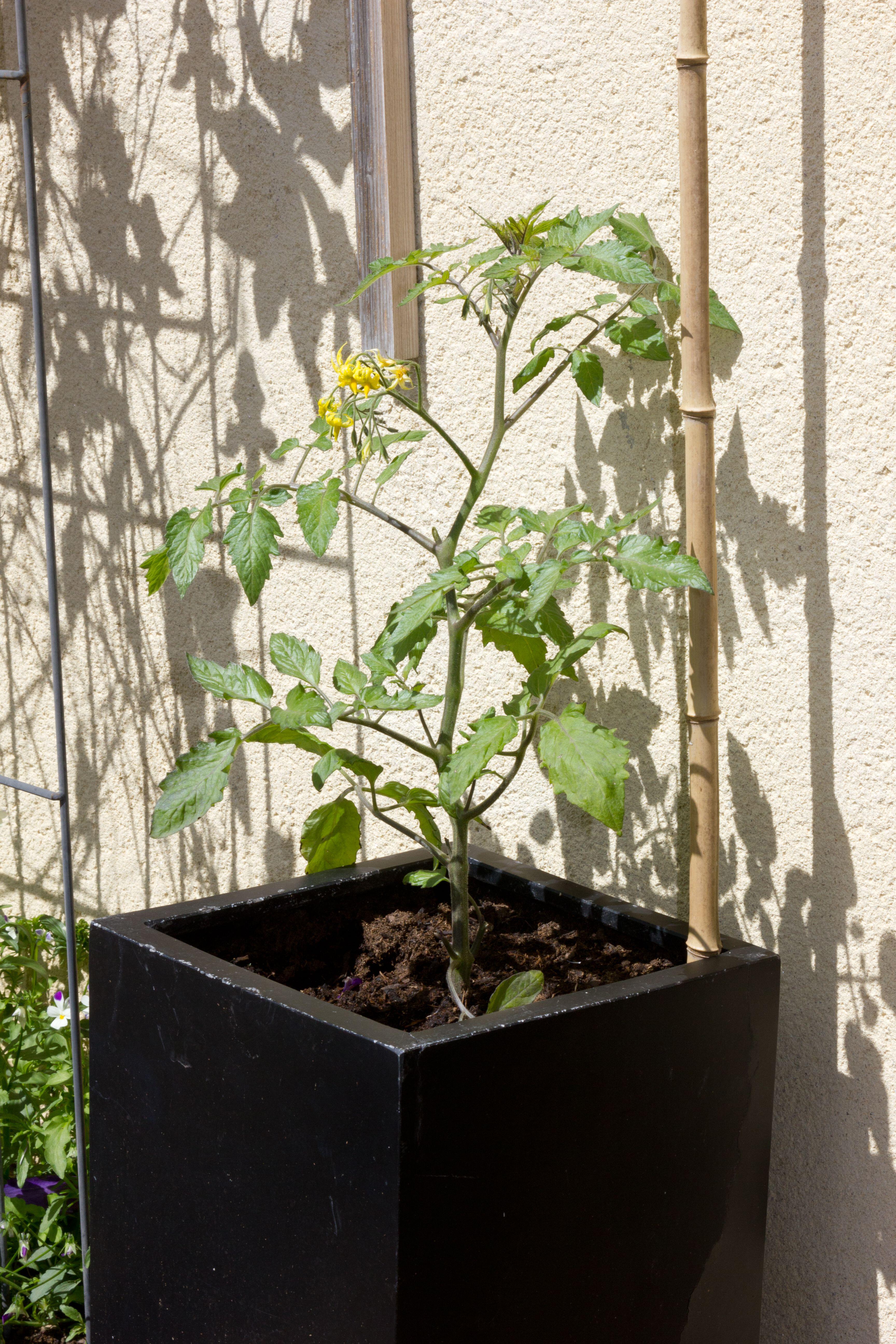
If your outdoor space is limited, vertical gardening might be your only answer to growing your own fruit and veg. In such cases, vining tomatoes are your best option, but you will need to use a cane, trellis, or another type of support to help your plants grow.
'If you're growing determinate or bush varieties in a smaller pot, you may not need to stake them, as they tend to be more compact and self-supporting,' says Richa. 'However, if you're growing indeterminate or vining varieties in a larger pot, you'll likely need to provide support to keep the plants from sprawling or tipping over.'
You can do this by simply spiking a bamboo cane into the soil within the center of your container. Craig suggests loop-tying the plant with twine to keep it vertical and in control.
7. Water regularly (and from the bottom)
We all know the importance of watering your garden often, particularly during the summer months, but this is especially true of tomato plants in containers. Tomato plants grown in containers will need more water than garden tomatoes as the soil will heat up faster, leading to more water evaporation. (And, as mentioned earlier, terracotta or other ceramic pots will also warm up faster.) You might need to water your tomatoes once a day during the peak growing season.
'Container-grown tomatoes don't have the advantage of putting roots deep into soil to find water, so watch the plant for signs of wilt during the hot part of the day and ensure sufficient water is applied to negate the wilting,' says Craig.
To avoid getting water on the leaves and stems of your tomato plants, Richa also suggests watering them from below by placing the pot in a tray or saucer of water. 'The soil will absorb the water from the bottom, preventing the leaves from getting wet and reducing the risk of fungal diseases,' she says. If watering using the bottom watering method, you'll still need to make sure the plant isn't sat in the water for too long, however.
8. Adopt a regular fertilizing regime
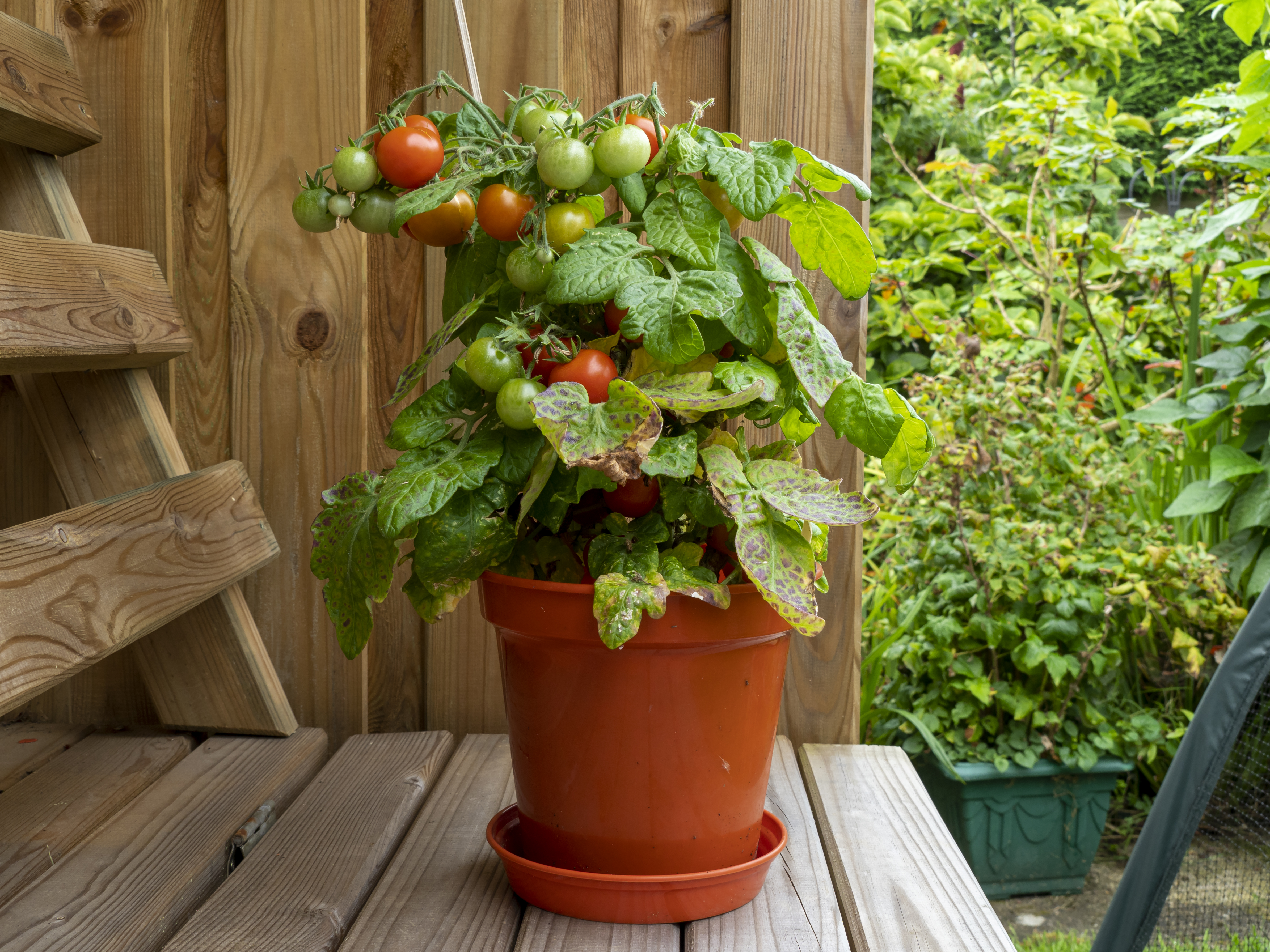
Finally, to keep this rapidly growing plant as happy and healthy as possible, it's a good idea to adopt a regular fertilizing regime.
'Tomato plants in pots require regular fertilization to maintain healthy growth and fruit production,' Richa explains. 'Use a balanced fertilizer or a fertilizer designed specifically for tomatoes and follow the instructions on the package.' As a general rule of thumb for potted tomato plants, fertilizing little and often is better than the alternative. We'd recommend adding a small amount every fortnight for the best results.
Espoma Organic Tomato-Tone Fertilizer, Amazon
Tomato-tone organic fertilizer from Espoma, available at Amazon, is suitable for all types of tomatoes, heirloom and hybrid. The rich blend of natural and organic ingredients, including 8% calcium, helps prevent blossom end rot and leggy foliage for the plumpest and juiciest tomatoes possible.
Should you plant from seeds or seedlings?
Seeds or seedlings? That is the question. The answer, says Craig, depends on your goals. 'If you have a good source for tomato starts that fit the types of tomatoes you wish to grow, that is a fine way to go. If you want the maximum array of choices to grow, seeds will provide a broader selection,' he says. 'It's good to know that tomato seeds last very well for 10-12 years, so those packets of seeds will be just fine to plant for many future gardens.'
If you're new to gardening, however, seedlings are probably your safest bet. 'Purchasing seedlings from a local nursery or garden center can be convenient if you don't want to start from seeds since the established plants can be planted directly into the garden or containers once the weather is warm enough,' says Richa. 'Tomatoes can also be propagated from stem cuttings, but this method requires a bit more expertise and care to ensure successful growth.'
Be The First To Know
The Livingetc newsletters are your inside source for what’s shaping interiors now - and what’s next. Discover trend forecasts, smart style ideas, and curated shopping inspiration that brings design to life. Subscribe today and stay ahead of the curve.

Lilith Hudson is a freelance writer and regular contributor to Livingetc. She holds an MA in Magazine Journalism from City, University of London, and has written for various titles including Homes & Gardens, House Beautiful, Advnture, the Saturday Times Magazine, Evening Standard, DJ Mag, Metro, and The Simple Things Magazine.
Prior to going freelance, Lilith was the News and Trends Editor at Livingetc. It was a role that helped her develop a keen eye for spotting all the latest micro-trends, interior hacks, and viral decor must-haves you need in your home. With a constant ear to the ground on the design scene, she's ahead of the curve when it comes to the latest color that's sweeping interiors or the hot new style to decorate our homes.
-
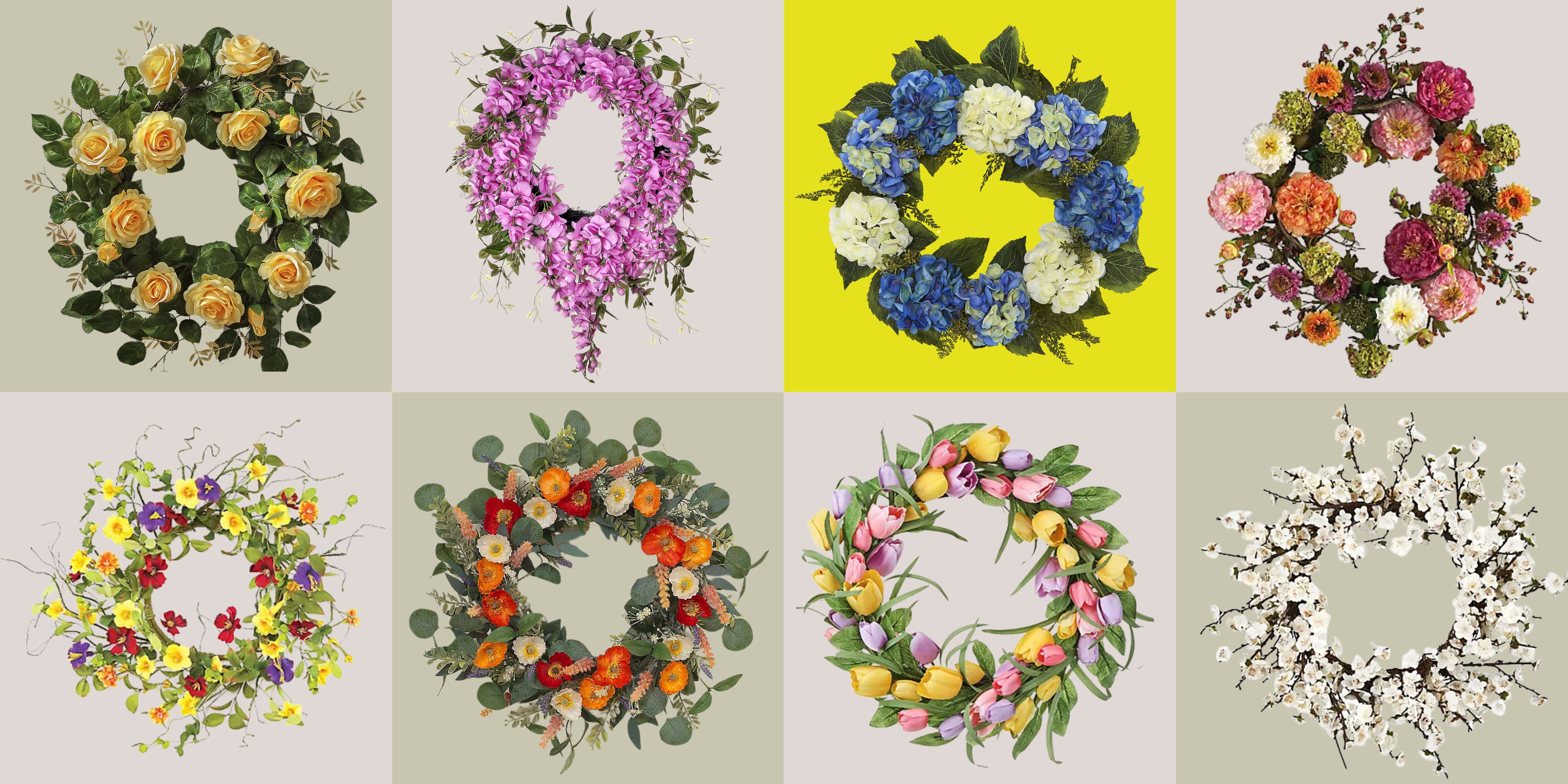 These Are the Flower Crowns I’m Wearing This Spring (Spoiler: They’re Actually for My Door)
These Are the Flower Crowns I’m Wearing This Spring (Spoiler: They’re Actually for My Door)Coachella confirmed the comeback of flower crowns. At home, they just go by another name: the spring wreath
By Julia Demer
-
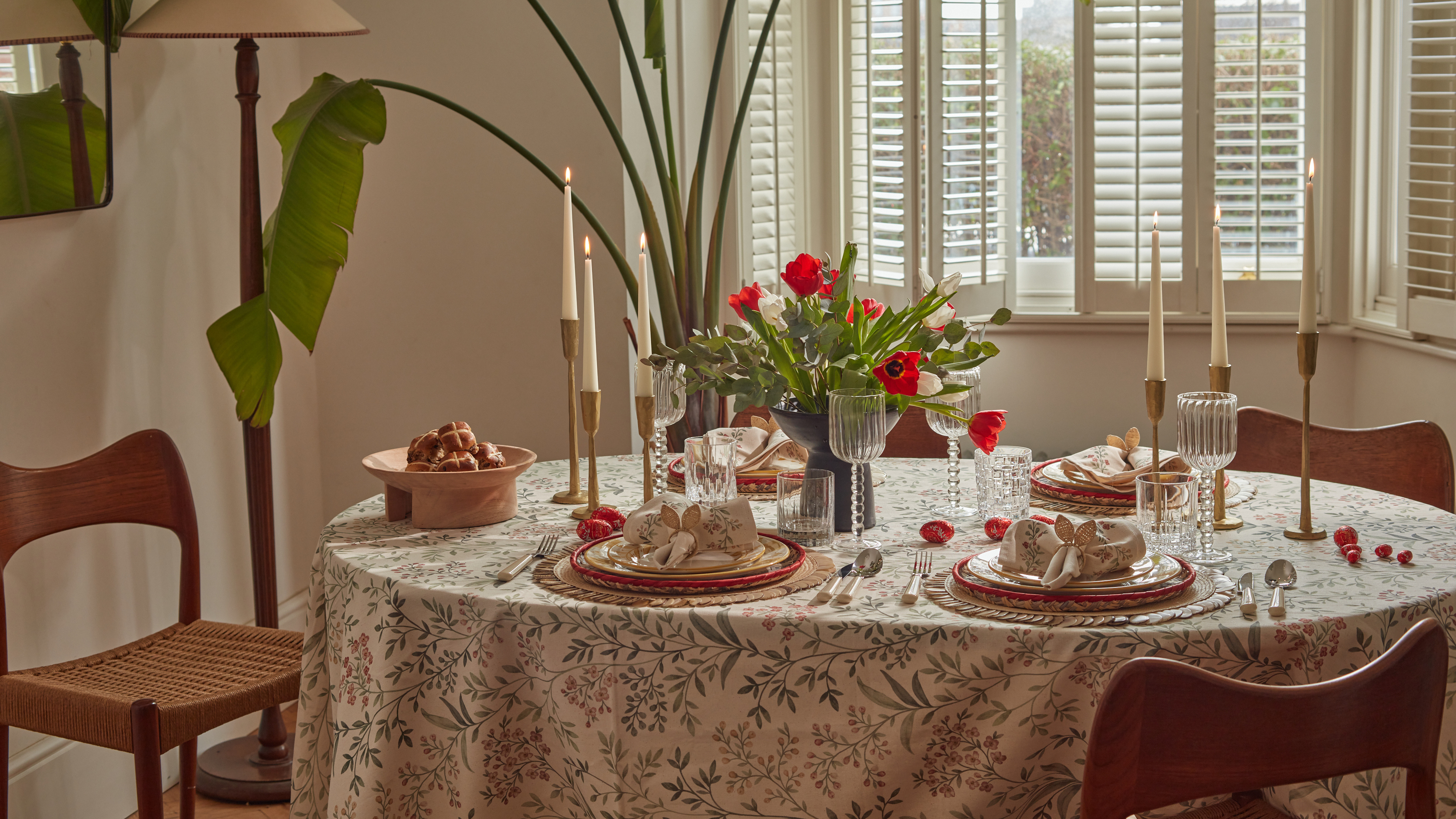 Bunny Ears, Be Gone — 7 Easter Table Styling Mistakes That Will Take Your Setting from Tawdry to Tasteful
Bunny Ears, Be Gone — 7 Easter Table Styling Mistakes That Will Take Your Setting from Tawdry to TastefulFrom fussy floral displays that disrupt conversation to over-relying on tacky tropes, don't fall victim to these errors when decorating your Easter table
By Lilith Hudson
